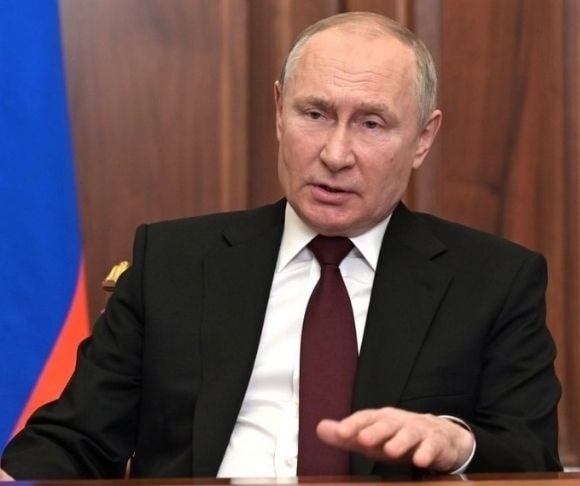Examining the invasion of Ukraine – or “Special Operation,” as Russia’s President Vladimir Putin calls it – one must ask: Was there a plan? Though Moscow has reconstituted its forces and is advancing again in a renewed offensive, this time focusing on eastern Ukraine, will the Kremlin fare any better? When the Russians began the initial attempt at assaulting its neighbor, Moscow’s soldiers tried to rush forward on three fronts, coming in from the northern Belarus border, the Russian border on the East, and Crimea in the South. The idea was that the phalanxes would not meet heavy resistance and would have captured Ukraine’s major cities in just a few days, and the Kyiv government would collapse – end of the invasion.
But that was just a fanciful notion, not a plan. There were no coordinated, integrated combined arms movements. From a bystander’s perspective, the special operation was just a dispersed number – albeit large – of infantry, artillery, armored, and aviation units following their bliss. If there was a plan, the object could not have been an ignominious retreat to lick wounds and replace destroyed equipment. “The withdrawal – substantiated by witnesses, Ukrainian officials, satellite images, and military analysts – marks the collapse, at least for now, of Russia’s haphazard campaign to seize the capital and replace Ukraine’s government,” was how a prominent New York paper described the Kremlin’s tail-between-the-legs exit from frontlines.
Nonetheless, Putin is sticking to his story that Russian forces are performing to plan. “He said the military operation was going as planned and that Russia’s aim in Ukraine was to meet all its goals and minimize losses. He said the end of the military operation depends on the intensity of the fighting,” The Guardian reported. If minimizing losses is part of Putin’s strategy, it is failing spectacularly. Accounts from where the most intense fighting is raging place Russian troops killed at or near 20,000 in 57 days. In under two months of hostilities, that number is 33% greater than the Soviet Union’s losses, estimated at 15,000, over nearly 11 years in Afghanistan.
Failing to achieve the objective of defeating reasonably well-disciplined Ukrainian soldiers and dedicated armed civilians around Kyiv, Kharkiv, Irpin, and other large urban areas probably wasn’t something the Kremlin anticipated. Pounding Ukrainian resistance with missiles, bombs, and artillery, only to meet even more determined opposition in and around Mariupol, likely wasn’t expected, either. “We’ve got to understand, Putin will pull out all the stops, I mean, all the stops to take this down. He is not going to tolerate the Ukrainians preventing him from occupying these major cities,” former US Army Vice Chief of Staff General Jack Keane told Fox News. So far, pulling out all the stops hasn’t brought Russia victory.

(Photo by Oleg Pereverzev/NurPhoto via Getty Images)
On April 18, Russian military units began an offensive to bring the Kyiv government to heel. Having withdrawn from trying to take down Kyiv and surrounding towns, Putin’s army turned to the east to concentrate on Donbas, Mariupol, and establishing a coastal land bridge between Crimea and the Donbas region. Having installed a new overall commander, re-equipping, and replacing personnel in depleted units, the new push in the near term has garnered the Kremlin’s marauders the first victory during the refocused engagements. Reports from Ukraine’s eastern battlefields tell of the fall of Kreminna as Ukrainian troops had withdrawn from the city. “Kreminna is under the control of the ‘Orcs’ [Russians]. They have entered the city. Our defenders had to withdraw. They have entrenched themselves in new positions and continue to fight the Russian army,” Serhiy Gaidai, governor of Luhansk, explained in a briefing, according to Sky News.
However, if the drubbing Moscow’s troops have gotten since their invasion began indicates what is to come, Russian forces are in for a long, painful conflict. There is no indication that logistics and supply chains have been improved or the top-heavy command and control structure adjusted to push decision-making to lower echelons of Kremlin fighting units. Furthermore, Ukrainian armed forces’ setbacks have only served to motivate Kyiv’s soldiers to greater acts of resistance. It seems Putin didn’t plan for that.
The views expressed are those of the author and not of any other affiliation.




